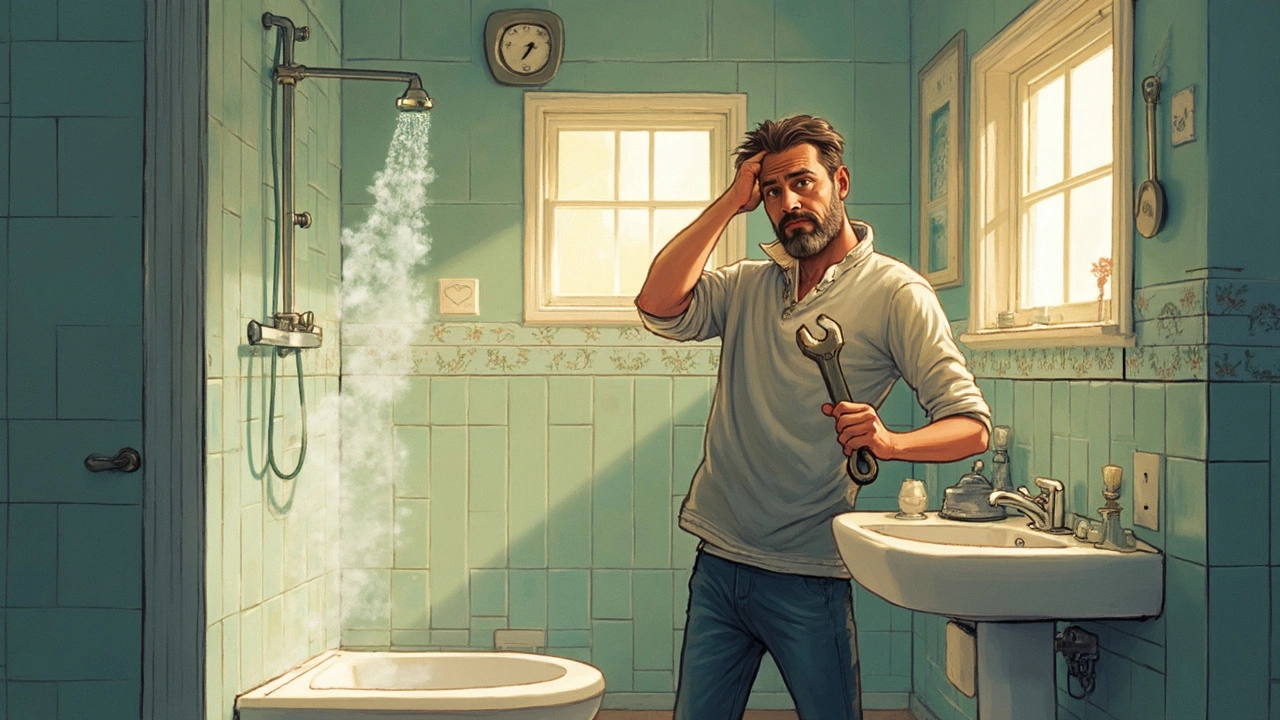Plumbing Issues: Quick Fixes for Home Water & Pipe Problems
Got a cold shower, a noisy boiler, or a drippy tap? You’re not alone. Most homeowners run into at least one of these problems each year. The good news is that many of them can be sorted with a few simple steps, saving you time and a call to the repair crew.
Top Plumbing Problems You’ll See
First, let’s list the familiar culprits. A water‑heater that keeps resetting usually means a faulty thermostat or a buildup of sediment. Leaky pipes often start from a loose joint or a cracked seal. Boilers that lose heat or make rattling noises are often suffering from air in the system or a worn pump. Even extractor fans can contribute to moisture problems if the motor sputters and stops moving air.
Each issue shares a common thread: a small fault that, if ignored, can turn into a costly repair. Spotting the early signs—like a sudden drop in hot‑water pressure, strange smells from the drain, or visible rust on pipe fittings—lets you act before the damage spreads.
How to Tackle Them Without a Pro
Start with the water‑heater. Turn off the power, let the tank cool, then flush it with a garden hose for about 10 minutes. This clears sediment that can corrode the tank and cause the thermostat to overwork. If the heater still resets, check the anode rod; a simple screwdriver can loosen it, and a new rod costs less than a full replacement.
For a leaking pipe, locate the wet spot, tighten any visible nuts, and wrap the joint with plumber’s tape. If the leak persists, a quick‑set epoxy putty can seal small cracks temporarily. Remember to shut off the main water supply before you start.
Boiler troubles often need a quick bleed. Turn the boiler off, locate the bleed valve near the radiator, and let any trapped air escape into a container. When the water runs clear, close the valve and restart the system. If the boiler still sounds odd, the pump may need a fresh bearing—something a local handyman can replace in an hour.
Extractor fans? Give the motor a once‑over. Unplug the unit, remove the cover, and clean out dust with a soft brush. A bit of WD‑40 on the motor shaft can restore smooth rotation. If the fan still hums without airflow, the motor might be burned out and should be swapped out.
When in doubt, keep a basic toolkit handy: adjustable wrench, plumber’s tape, bucket, and a flashlight. These tools let you diagnose most issues fast. If you’ve tried the steps and the problem stays, it’s time to call a professional. A quick phone call can prevent a small hiccup from becoming a full‑blown emergency.
Bottom line: most plumbing issues are preventable with regular checks and a little DIY know‑how. Give your water‑heater a yearly flush, watch for drips, and listen for unusual noises. A few minutes of attention now can spare you a big bill later, and keep your home running smoothly.

Hot Water in Sink but Not Shower? Here's What's Going On
Experiencing a lack of hot water in your shower while your sink works just fine can be a head-scratcher. This anomaly usually points to specific plumbing issues or equipment malfunctions. In this article, we'll unravel the mystery behind why hot water may flow from your sink but not your shower, offering practical tips and solutions to restore your shower's warmth.